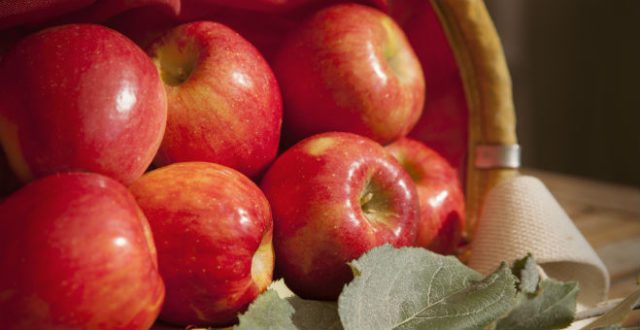Sep 29, 2017Smaller crops to boost apple, pear and grape grower prices
USDA’s National Agricultural Statistics Service forecast the 2017 U.S. apple crop at 10.4 billion pounds, down 7 percent from the previous year but higher than most years since 2000, if realized.
The Fruit and Tree Nuts Outlook was released Sept. 29 by USDA ERS on.
While the anticipated smaller crop should provide a boost to U.S. apple prices during the 2017/18 marketing year, above-average production, competing large storage supplies from the previous harvest, and weak 2016/17 end-of-season prices will be mitigating forces on early-season fresh apple prices.
The 2017 U.S. pear crop is forecast to decline for a fourth consecutive year to 1.41 billion pounds, down 4 percent from the previous year, pointing to stronger pear prices for the season. Forecast lower production in Washington state is driving the overall decline.
The U.S. grape crop in 2017 is forecast at 15.0 billion pounds, down 2 percent from a year ago. California’s production is forecast to decline at the same pace, mostly reflecting a smaller raisin grape crop. Declines are also anticipated in other key states.
As California’s table grape crop is forecast down less than 1 percent, fresh-market production will likely be near the previous 5-year average highs, indicating ample supplies to meet current demand.
The final estimate for the U.S. citrus crop in 2016/17 is 7.77 million tons, an 11-percent decline, year over year, with declines for most citrus fruit.
As the 2017/18 season begins, the initial forecast for California’s navel orange crop is down 10 percent from last season. Also, while the full damage and loss assessment from Hurricane Irma is ongoing, early indications suggest Florida’s citrus production will slip again in 2017/18. U.S. cranberry production in 2017 is forecast down 6 percent from the 2016 record crop but the second largest historically, if realized.
Continued ample production and large beginning inventories will likely ease any upward pressure on cranberry prices. After three consecutive years of setting record highs, California’s walnut production is forecast to decline during the 2017/18 season. Meanwhile, the state’s almond crop is forecast to surpass the 2016/17 record crop. This, combined with sizeable stocks from last season, will likely suppress almond grower prices again in 2017/18.
Fruit and nut grower price index weakens
After being steady from year-ago prices briefly in June, the July 2017 grower price index for fruit and nuts fell below last year. At 127 (2011=100), the July index is down slightly from the July 2016 index of 132. While mostly below the exceptionally strong levels of 2014 to 2015, the 2017 index is slightly higher than average levels.
Lower grower prices for fresh apples, pears, and grapefruit more than offset the higher grower prices for grapes, peaches, strawberries, and most citrus fruit (except grapefruit), driving down the July index.
The near-record crop of apples harvested in the fall of 2016 led to above-average inventories at the end of the 2016/17 marketing season (August-July), contributing to lower grower prices in July 2017 compared to the same time a year ago. Production for 2017/18 is forecast to be down but still slightly higher than average, so there should be adequate supplies moving into the season.
While the smaller crop is expected to support prices during the season, large inventories from last season should ease some of this upward pressure, especially early in the season.
Grape production is also anticipated to fall this year, and lower shipment volumes to date, based on USDA Agricultural Marketing Service (AMS) data, have elevated prices thus far. As with the previous season, peach and pear prices will likely continue to be strengthened by the forecast lower production.
Despite the forecast for a smaller strawberry crop in 2017 (down 3 percent from 2016), U.S. strawberry shipments have been higher than year-ago levels, having little effect on July grower prices. Although supplies have remained robust through August, AMS shipments indicate a large drop in September movement, which may result in healthy strawberry prices for the remainder of summer.















